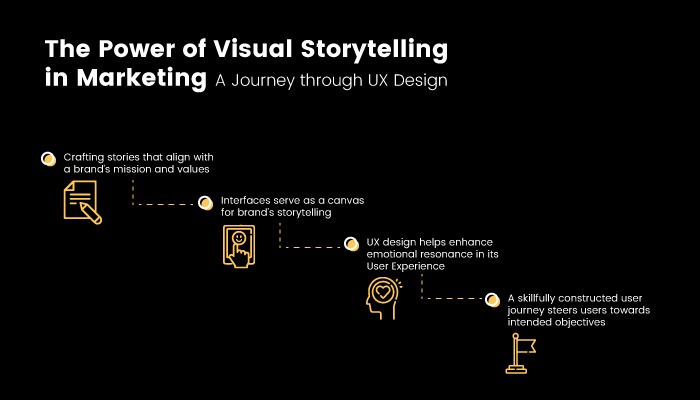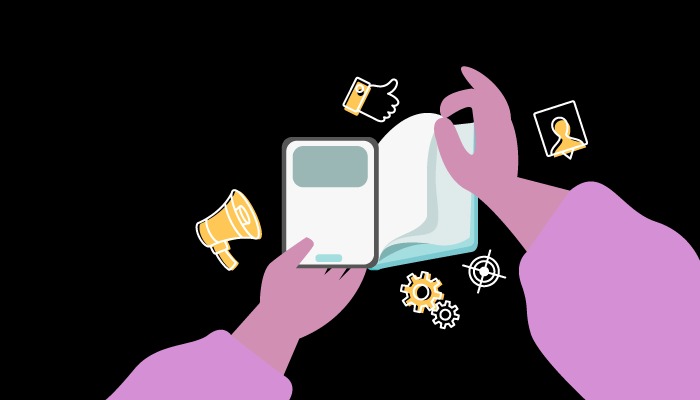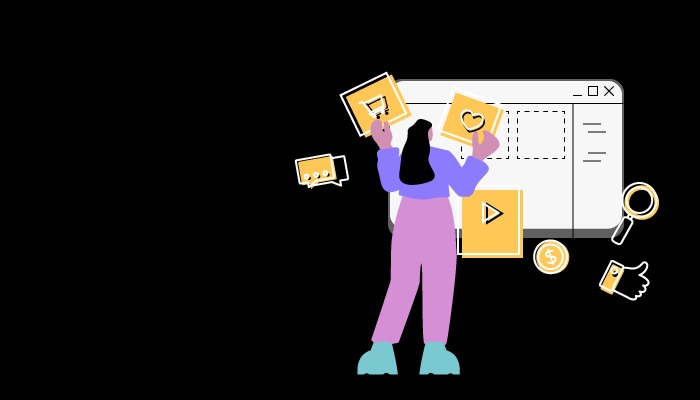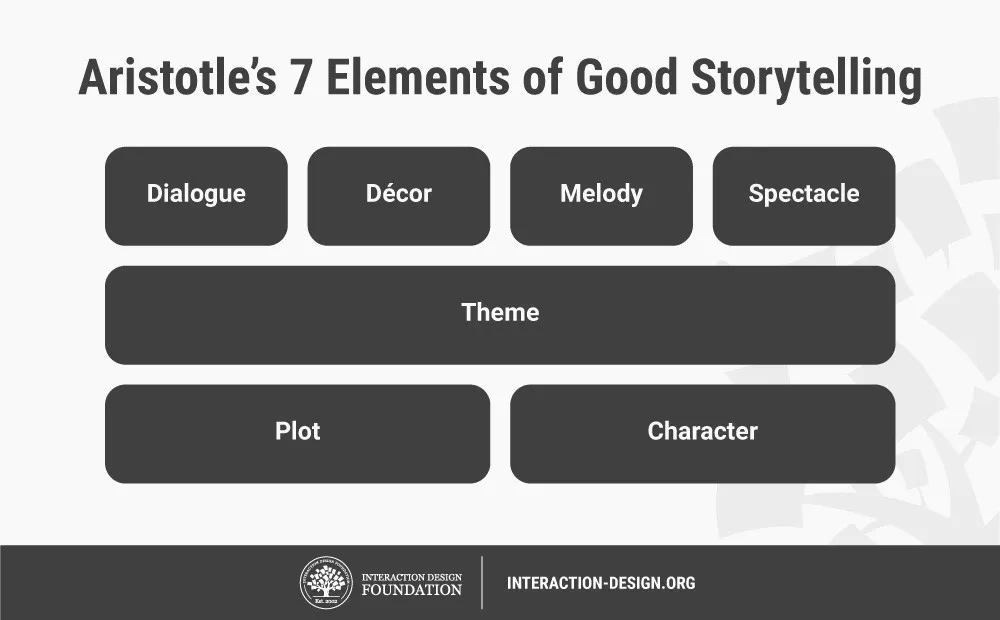Visual Storytelling In Modern Marketing

From as early as our childhoods, we humans have been naturally drawn to the power that storytelling holds. From Bedtime stories to being inspired by the stories of many, to eventually writing our own heroic tales of victory, storytelling is an art we simply can’t seem to let go of.
With the existence of such an amazing skill lying within all of us, one can’t help but ponder, how would storytelling fare in a field like marketing.
Turns out it fares amazingly well, and even more so in our modern world where your average consumer is bombarded with short-form content on a regular basis.
The timeless art of storytelling has the incredible ability to captivate audiences and engage their inner emotions to spark a connection between brands and consumers. Furthermore, Storytelling poses the potential to further enrich the overall user journey that informs and ultimately persuades the consumer in favor of the brand, when combined with the proven principles and theories of User Experience (UX) design.
In this blog, we will explore how storytelling makes for an amazing marketing device, and how it can be taken further ahead with the power of UX, to potentially reshape the landscape of marketing as we know it.
Storytelling: What’s the Essence?
Deep within, storytelling is simply nothing more than spinning a narrative that resonates with people on a personal level. When it comes to marketing, this implies crafting stories that align with a brand’s mission and values, in ways that help customers relate to the brand as they would with someone in their lives. A customer must ideally be able to imagine themselves as the protagonist in the narrative created – with the brand being a supporting character that helps them achieve their desired goal.
Apple is a good example of this – their ads show their products as much more than just a phone, it is shown as an elite product that exudes class and refinement. It makes customers feel like they’re buying into a lifestyle, which has worked to an extent.
Could UX be a good Canvas for Storytelling?
Much like the name suggests, UX Design focuses on creating smooth and enjoyable interactions on digital products and services for its users. While UX Design is generally associated with aesthetics and intuitive design, it goes much beyond, as it involves understanding user needs, and behaviors, and finding inspiration from various sources to design interfaces that enable smooth navigation and spark user engagement. The amount of thought into understanding a customer that is applied in the field of UX also makes it a fertile ground for storytelling to flourish.
A well-designed website interface could serve as a canvas on which a brand could apply its storytelling practices. Every element of the website, be it the elements, color scheme, typography, or layout, could contribute to the story and subtly convey a message behind what the brand stands for and how it could improve the user’s life, while also going with the theme that the brand’s story aims to portray.

Just like chapters to a book, each screen of a website could act as a logical/sequential guide for a brand to direct its customers through in order to present information in a coherent manner. Brands could effectively spin impactful narratives by integrating storytelling practices into good UX Design.
A good example of this would be Airbnb’s website, where users are presented with narratives of amazing stays and memorable experiences by fellow guests as they simply search for accommodations in a special location. Each listing and the associated reviews tell a unique story that captures the essence of a place while also igniting a spark within the customer’s mind. The combination of visuals, descriptions, and user reviews all contribute to an immersive experience that lets users envision their own story within the context of a potential stay.
Emotional Connect that invokes Brand Loyalty
Infusing storytelling into effective UX design helps enhance the emotional resonance of the intended User Experience. This can go a long way as emotions tend to establish brand loyalty by a large margin, especially when it is attached to a good product.

Coca-Cola’s holiday campaigns are another good example of storytelling that captures emotions. Year after year, they evoke feelings of warmth, togetherness, and nostalgia. Their website and advertisements are carefully designed to evoke those emotions, from the color palette to the imagery of joyful gatherings. This emotional connection fosters brand loyalty and turns customers into brand advocates who eagerly share their experiences with others.
Achieving a Perfect Sync of UX and Storytelling
Storytelling within the realm of UX design encompasses more than just visual appeal; it serves as a mechanism to direct users toward specific actions. A skillfully constructed user journey subtly steers users towards intended objectives, akin to a thoughtfully paced story that entices readers to eagerly flip through the pages.
A prime example of this is Amazon, a colossal player in the e-commerce space. Their user interface is masterfully orchestrated to seamlessly guide and onboard users from initial product exploration to the finalization of purchase. This user journey unfolds like a cohesive narrative, adorned with unmistakable prompts for action at each juncture. Leveraging insights from users’ browsing history, the platform tailors product recommendations, fostering a sense of cohesiveness that aligns with the overarching goal of shepherding users through the successive chapters of their shopping expedition.
Conclusion
In the modern marketing landscape, the combination of storytelling and UX design has the power to elevate brands beyond the realm of ordinary advertisements. By crafting narratives that resonate emotionally and integrating them seamlessly into user experiences, brands can create lasting connections with their audiences.
The power of a good User Experience that harnesses the effect of storytelling can be equated to a good movie. A well-narrated movie will have its audiences spellbound, in fact, it will have them wanting more while also recommending the movie to their loved ones.
A well-designed user experience enriched with the elements of storytelling poses the potential to achieve the same, by guiding its users through a well-designed website or app that offers meaningful interactions and access to a product or service that the clients seek, and every good experience delivered would ultimately go a long way in building trust within the customer, ultimately ensuring brand loyalty and a possible upcoming stream of another set of customers based on their recommendations that stem out of sheer brand loyalty.
With the lines that differentiate the processes of Marketing and delivering a good User Experience slowly beginning to thin out into an eventual blur, it is crucial for companies to harness the synergy between effective storytelling practices and User Experience Design in order to shape and execute successful upcoming marketing campaigns.









